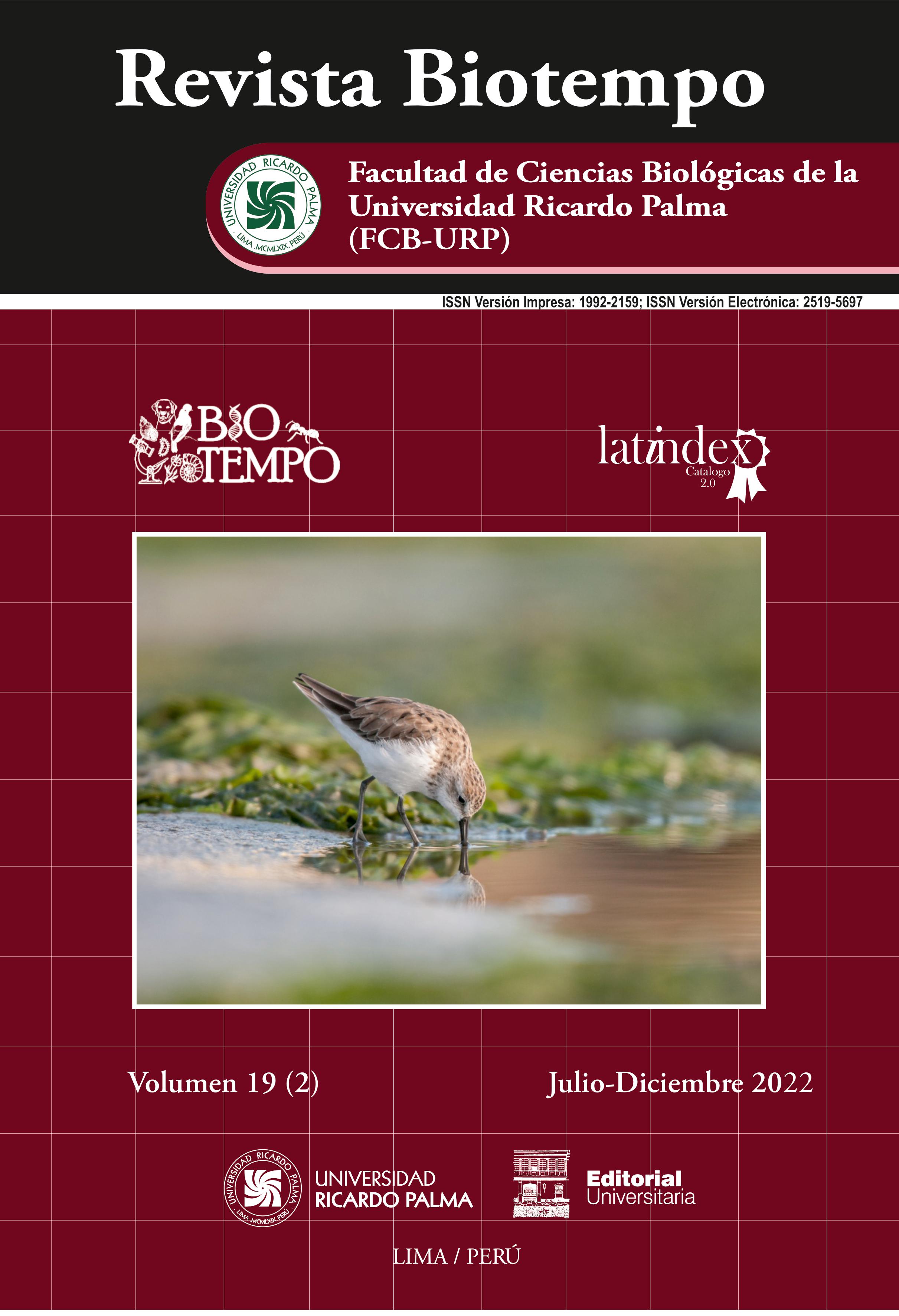BIOLOGICAL ABSORPTION COEFFICIENT IN ZEA MAYS DUE TO LEAD EXPOSURE AL THE QUITASOL SOLID WASTE LANDFILL, ABANCAY-APURÍMAC, PERU
DOI:
https://doi.org/10.31381/biotempo.v19i2.5237Keywords:
environmental impact, leaching, heavy metals, productivity, solid wasteAbstract
The absorption of heavy metals by growing plants is an environmental problem for human consumption. The aim of the study was to describe the biological absorption coefficient in Zea mays due to lead exposure in the Quitasol solid waste dump in Abancay, Apurímac, Peru. Three sampling points (PM1, PM2, and PM3) of the agricultural soil where the biological absorption coefficient (BAC) was determined were selected through a random probability sampling, through the relationship between the concentration of assimilable lead in the root and the concentration of assimilable lead in the soil. The BCA ranged from 0.06 to 0.91 where there were statistically significant differences between sampling points 1 and 3 compared with 2. It was observed that the CAB concentrations were higher than the value 0, which indicates that the plant is absorbing lead and could produce phytotoxicity effects in Z. mays, as well as bioaccumulation. It is concluded that the biological absorption coefficient in Z. mays shows that the soil is contaminated and, given the environmental conditions, the sowing and consumption of this crop is not adequate, as it would have effects on human health.










